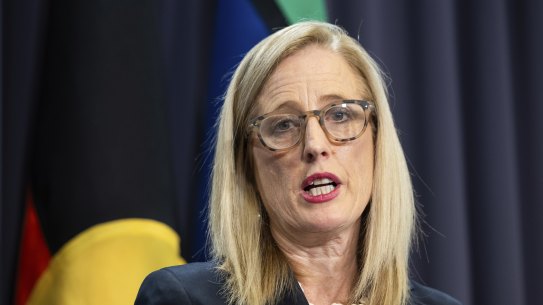RBA reveals why it held interest rates steady at last meeting
ByShane Wright
Could be the end of rate rises, could be reducing rates early next yearThe Reserve Bank revealed it held interest rates steady at its most recent meeting amid concerns that previous rate hikes could drive up unemployment and slow the economy more than expected.
Minutes of the RBA board’s July meeting, at which it held the official cash rate steady at 4.1 per cent, also show that despite a lift in wages growth, real household incomes are falling as high-interest rates, inflation and taxes bit into consumers’ spending power.
The bank has lifted interest rates at 12 of its past 14 meetings and is in the midst of the most aggressive tightening of monetary policy since the 1980s.
The minutes show the RBA considered another quarter percentage point rate increase at the July meeting but believed the argument to hold steady was “stronger”.
While inflation risks remained prominent, there is also growing concern that previous rate rises may slow the economy.
The economy expanded by just 0.2 per cent in the March quarter and actually shrank when measured in per capita terms.
Noting that interest rates had gone up rapidly over a short period of time, the minutes show growing concern within the RBA board about the overall strength of the economy if monetary policy was tightened further.
“Members also discussed the risk that output growth slows by more than expected. They noted that the slowing in economic activity in general, and consumption in particular, had been consistent with what could reasonably have been expected given trends in household income and wealth,” the minutes showed.
RELATED ARTICLE
However, members observed there was considerable uncertainty about the resilience of household consumption and the squeeze on many households’ finances could result in consumption slowing more sharply than implied by the current forecasts.
“Higher interest rates could also be expected to encourage households to save more, which would affect consumption. If that were to occur, the demand for labour would slow and the unemployment rate would be likely to rise beyond the rate required to ensure inflation returns to target in a reasonable timeframe.”
A key concern of the bank has been a lift in wages growth which is expected to reach an 11-year high of around 4 per cent in the September quarter.
But the minutes show that despite high wages growth, actual income growth for most people is going backwards.
“Total real household incomes had declined by 4 per cent over the year to the March quarter, as the contribution from labour income had been more than offset by rising prices, tax payable and higher interest rates,” the minutes showed.
The minutes note that by the time of the RBA board’s meeting in August it will have fresh data on the state of the jobs market, household spending and inflation which will all influence a decision whether to take interest rates higher.
- Forums
- Property
- Home price trend





